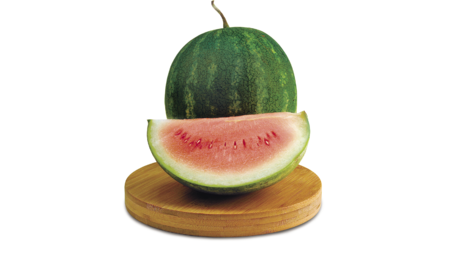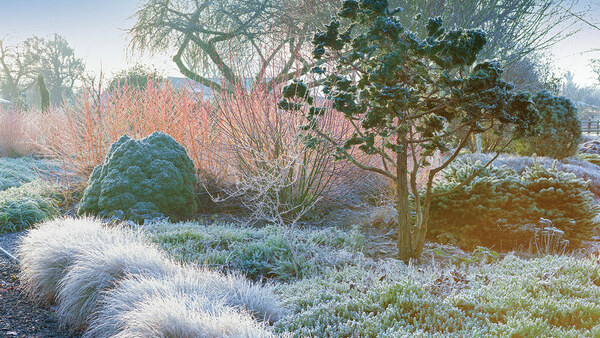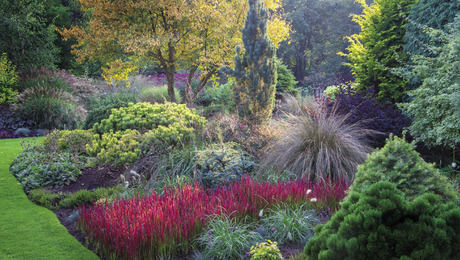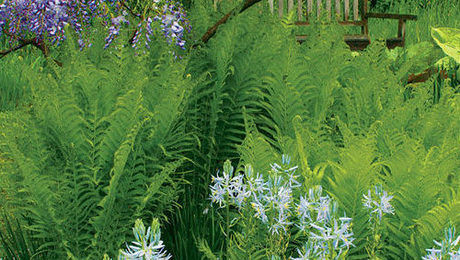
 It is easy to dismiss the garden of Adrian Bloom as having no relevance for us normal American gardeners. First, the garden is in England, where, as everyone knows, the climate is always perfect for gardening and everything grows perfectly. Second, Mr. Bloom is a renowned plantsman with access to more, cooler, cheaper plants than we do.
It is easy to dismiss the garden of Adrian Bloom as having no relevance for us normal American gardeners. First, the garden is in England, where, as everyone knows, the climate is always perfect for gardening and everything grows perfectly. Second, Mr. Bloom is a renowned plantsman with access to more, cooler, cheaper plants than we do.
But, erroneous assumptions aside, I keep looking at his garden and thinking, “We could do that here in the States.” One of the smartest ideas we can steal from Mr. Bloom is remembering to pay attention to what the garden will look like when it’s dormant. Whether this season is two months, three months, or six months for you, it’s still a significant length of time when you can just ignore your garden. And while we can’t steal Mr. Bloom’s climate, we can be inspired by his designs—and most of the plants are available here, too.
Sometimes, all it takes is one plant
 You know you have a strong design if you could remove any of the plants from the scene and it would still work. That’s the case with this scene, but it’s the redtwig dogwood that takes this grouping from “nice” to “amazing.”
You know you have a strong design if you could remove any of the plants from the scene and it would still work. That’s the case with this scene, but it’s the redtwig dogwood that takes this grouping from “nice” to “amazing.”
Key plants:
1. ‘Northwind’ switchgrass (Panicum virgatum ‘Northwind’, USDA Hardiness Zones 5–9)
2. ‘Matrona’ sedum (Sedum ‘Matrona’, Zones 4–9)
3. ‘Compacta’ corkbark fir (Abies lasiocarpa var. arizonica ‘Compacta’, Zones 4–8)
4. ‘Reinshaus’ white pine (Pinus strobus ‘Reinshaus’, Zones 3–8)
5. ‘Cardinal’ redtwig dogwood (Cornus sericea ‘Cardinal’, Zones 3–8)
6. ‘Blue Ice’ Arizona cypress (Cupressus arizonica var. glabra ‘Blue Ice’, Zones 6–9)
7. ‘Grayswood Ghost’ Himalayan birch (Betula utilis var. jaquemontii ‘Grayswood Ghost’, Zones 4–7)
8. ‘Aurea Densa’ false cypress (Chamaecyparis lawsoniana ‘Aurea Densa’, Zones 5–9)
Busy can be bold


There is plenty of drama to this combination without any need for bold texture. The red stems of the dogwood shoot skyward as though they were the inflorescences of the red tussock grass. Meanwhile, the deep burgundy leaves of the bergenia create busy lines to contrast the easy arches of the grass.
Key plants:
1. Red tussock grass (Chionochloa rubra, Zones 8–10)
2. ‘Siberica’ tatarian dogwood (Cornus alba ‘Siberica’, Zones 3–8)
3. Hellebore (Helleborus nigercors, Zones 5–9)
4. ‘Bressingham Ruby’ bergenia (Bergenia ‘Bressingham Ruby’, Zones 3–9)
Unity brings opportunity


In general, conifers tend to go well with other conifers, their needled texture providing a connection. This unity allows the opportunity to use a variety of shapes and forms, such as the prostrate Siberian cypress, the round Siberian pine, and the funky false cypress.
Key plants:
1. Siberian cypress (Microbiota decussata, Zones 2–7)
2. ‘Golden Spreader’ Nordmann fir (Abies nordmanniana ‘Golden Spreader’, Zones 4–8)
3. ‘Kramer’s Rote’ heath (Erica darleyensis ‘Kramers Rote’, Zones 6–8)
4. ‘Carsten’s Wintergold’ mugo pine (Pinus mugo ‘Carsten’s Wintergold’, Zones 2–8)
5. ‘Globe’ Siberian pine (Pinus pumila ‘Globe’, Zones 4–7)
6. ‘Dik’s Weeping’ false cypress (Chamaecyparis lawsoniana ‘Dik’s Weeping’, Zones 5–8)
7. Birch (Betula spp. and cvs., Zones 3–9)
8. ‘Midwinter Fire’ bloodtwig dogwood (Cornus sanguinea ‘Midwinter Fire’, Zones 4–7)
9. Black mondo grass (Ophiopogon planiscapus ‘Nigrescens’, Zones 6–11)
A design can change with the seasons

Before it drops its leaves, this row of dogwoods stops the eye and keeps it on the heath in front of it. As the seasons change, however, the role of these shrubs changes as well. In winter, they catch the eye with their brilliant stems and let the viewer see through them, bringing the pines behind them into a scene that now has greater depth.
Key plants:
1. ‘Springwood White’ heath (Erica carnea ‘Springwood White’, Zones 5–8)
2. ‘Glauca Prostrata’ fir (Abies procera ‘Glauca Prostrata’, Zones 5–8)
3. ‘Midwinter Fire’ bloodtwig dogwood (Cornus sanguinea ‘Midwinter Fire’, Zones 4–7)
4. ‘Humpy’ mugo pine (Pinus mugo ‘Humpy’, Zones 2–8)
5. ‘Aurea Densa’ false cypress (Chamaecyparis lawsoniana ‘Aurea Densa’, Zones 5–9)
What beautiful bones

 If you were ever unclear about design processes like “creating the bones” or “establishing rhythm,” then this scene should help clear that up. When leaves and flowers have gone, the bones and the rhythm they create remain, and their benefit becomes unmistakable. If your garden is in the North, these rhythmic bones will ensure that even the lumps they create in the snow will look good.
If you were ever unclear about design processes like “creating the bones” or “establishing rhythm,” then this scene should help clear that up. When leaves and flowers have gone, the bones and the rhythm they create remain, and their benefit becomes unmistakable. If your garden is in the North, these rhythmic bones will ensure that even the lumps they create in the snow will look good.
Key plants:
1. ‘Tenas’ Sitka spruce (Picea sitchensis ‘Tenas’, Zones 7–8)
2. Autumn sedge (Carex dipsacea, Zones 7–11)
3. ‘Smidtii’ Bosnian pine (Pinus heldreichii ‘Smidtii’, Zones 4–8)
4. ‘Bressingham Ruby’ bergenia (Bergenia ‘Bressingham Ruby’, Zones 3–9)
5. Red tussock grass (Chionochloa rubra, Zones 8–10)
6. ‘Grayswood Ghost’ Himalayan birch (Betula utilis var. jaquemontii ‘Grayswood Ghost’, Zones 4–7)
7. ‘Blue Ice’ Arizona cypress (Cupressus arizonica var. glabra ‘Blue Ice’, Zones 6–9)
8. ‘Siberica’ tatarian dogwood (Cornus alba ‘Siberica’, Zones 3–8)
9. ‘Midwinter Fire’ bloodtwig dogwood (Cornus sanguinea ‘Midwinter Fire’, Zones 4–7)
Steve Aitken is the editor.
Photos: Richard Bloom


















Comments
Adrian Bloom's garden is a garden that is like no other. It has been designed to create a sense of awe and wonder. It is an inspiring place to visit. This garden is a place where you can find peace and serenity. It has a calming effect on everyone who visits it. The beautiful flowers and plants make the atmosphere feel like one of peace and serenity. Luckily also completed reading https://bestproductlists.com/laptops-for-computer-science-students article while sitting in this beautiful garden and selected my laptop from the article which is going to help me a lot in learning about my computer science degree.
Log in or create an account to post a comment.
Sign up Log in